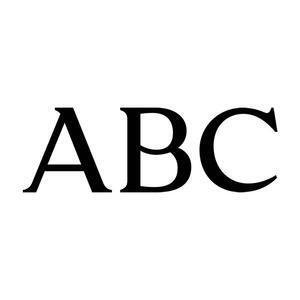- The U.N. General Assembly voted on two competing resolutions marking the third anniversary of Russia’s invasion of Ukraine. Ukraine’s resolution called for Russia’s immediate withdrawal, while the U.S. proposed a measure urging a swift end to the war without directly condemning Russia.
- The U.S. shift in stance has sparked diplomatic tensions, with Ukraine’s President Volodymyr Zelenskyy criticizing President Trump’s approach as legitimizing Russian aggression.
- The U.N. broadly backed Ukraine’s resolution, while amending the U.S. resolution, adding comments about Russia’s aggression in its invasion of its neighbor.
Full Story
The United Nations General Assembly voted on two competing resolutions on Monday, Feb. 24, marking the third anniversary of Russia’s invasion of Ukraine.
Ukraine, backed by European nations, is calling for the immediate, complete and unconditional withdrawal of Russian troops. Meanwhile, the United States pushed its own measure, which called for an end to the war but did not explicitly condemn Russia’s actions.
Diplomatic tensions escalated ahead of the vote, as Washington shifts its stance on Ukraine. President Donald Trump’s administration pressured Ukraine to withdraw its resolution, but Kyiv refused, setting up a divided vote at the U.N.
What did the U.S. propose instead of Ukraine’s resolution?
The U.S. draft resolution avoided directly blaming Moscow, a key difference from Ukraine’s measure. Instead, it acknowledged the “tragic loss of life throughout the Russia-Ukraine conflict” and called for a “swift end to the war” while urging a lasting peace.
The shift reflects a broader change in U.S. policy, as Trump pushes for direct negotiations with Russia. Moscow’s U.N. ambassador, Vassily Nebenzia, called the proposed U.S. resolution “a good move,” raising concerns among European allies that Washington is easing pressure on the Kremlin.
How has Ukraine responded to the U.S. shift?
Ukrainian President Volodymyr Zelenskyy has openly criticized Trump’s stance, accusing him of legitimizing Russian aggression. Trump has referred to Zelenskyy as a “dictator,” falsely implied that Ukraine was responsible for the war and warned that Kyiv must “move fast” in negotiations or risk losing the country.
Zelenskyy dismissed Trump’s remarks, saying the U.S. president was living in a “Russian-made disinformation space.”
What was Europe’s stance on the U.N. vote?
European leaders strongly backed Ukraine’s resolution, and expressed frustration with Trump’s diplomatic approach. More than a dozen Western leaders traveled to Ukraine for anniversary events, pledging new military aid.
European Commission President Ursula von der Leyen warned that the war’s outcome could have global security consequences, saying, “Autocrats around the world are watching very carefully whether there’s any impunity if you violate international borders or invade your neighbor.”
How did the vote turn out?
In a win for Ukraine, the U.N. decided to broadly support the country’s resolution. It passed 93-18, with a total of 65 abstentions. Still, previous votes saw upwards of 140 countries condemn Russia’s actions.
The U.S. resolution, while not outright rejected, was amended by the U.N. General Assembly, adding a section that made it clear that the Russian Federation had violated the U.N. Charter when it invaded Ukraine.
While the U.S. voted “no” to Ukraine’s proposal, it abstained from voting on its own amended resolution. Another vote is coming, however, for the U.S. proposal in the U.N. Security Council. China currently leads the body, and has a vote in the works for later in the day on Monday.

How is Russia advancing on the battlefield, and what about North Korea?
While diplomacy plays out at the U.N., Russia continues to make gains on the battlefield. Ukraine is facing troop and ammunition shortages, and over the weekend, Moscow launched its largest drone attack of the war, hitting Ukraine with 267 drones.
Ukraine’s resolution specifically warned against the involvement of North Korean forces. Reports indicate that Pyongyang may be supplying support to Russia, raising concerns about further escalation.
Is Trump planning direct talks with Putin?
Trump has signaled openness to direct negotiations with Russian President Vladimir Putin. Reports suggest that Washington and Moscow are discussing the possibility of reestablishing diplomatic ties, though no formal agreement has been reached.
What is the U.N. secretary-general saying?
U.N. Secretary-General António Guterres called the anniversary a “grim milestone,” noting that more than 12,600 Ukrainian civilians have been killed since the war began.
With the U.N. vote, Ukraine faces growing pressure to negotiate on terms it has long resisted. The outcome of the two dueling resolutions signaled that, while a majority of the world’s recognized nations still support Ukraine, that number is dropping. The vote at the U.N. Security Council may also show whether the U.S. is shifting away from its previous commitments to the European country.


























































